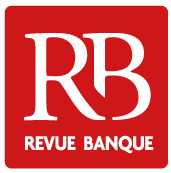New climate-related disclosure requirements for French investors: achieving quality disclosure at last?
The government has recently modified the environmental, social and governance disclosure obligations for French investors via the publication of an implementing decree which specifies regulator expectations. Romain Hubert of the Institute for Climate Economics explains why this decree was to be expected and necessary for climate reporting. While he welcomes the approach chosen which aims to finally improve the quality of reporting, he regrets that the decree does not encourage investors to clarify their role in the fight against climate change.
This Op-Ed has been originally published in French on Revue Banque
Years of methodological innovation (and confusion)
The objective of climate disclosure is to get investors to provide clear, concise, reliable and comparable information on the management of their exposure to climate risks – the transition risk and the physical risk – and on their strategy to contribute to the low-carbon transition. This is a real technical challenge for investors, who need to figure out how to provide a compelling measure of where they stand on these issues, and indicators to track their progress.
The first climate disclosure requirement for French investors was introduced in 2015 by Article 173-VI of the French Law for Energy Transition and Green Growth. This was a pioneering move on global level in a context where regulators and investors were only starting to address climate issues in the financial sector. The regulator was seeking to mobilize a majority of financial players and to encourage them to develop simultaneously assessment methods and the necessary input data. To do so, the decree implementing article 173-VI asked the largest institutional investors and asset management companies to explain and justify how they were taking climate risks into account and how they were contributing to the transition, without formulating any precise methodological requirements. It also provided financial actors with the necessary time to make progress, thanks to a “comply or explain” approach whereby investors could partly opt out of the required information if they explained why they had not managed to provide it.
These years of ” disclosure ” have allowed a variety of assessment methods to emerge. Unsurprisingly, this first stage was not sufficient to ensure the necessary quality of the information provided to investors: the lack of quality was rightly criticized every year, including by the regulators, up until the last exercise in 2020. The main issues pointed out related to the use of heterogeneous and opaque methods, developed independently by a few service providers, providing uneven and non-comparable results. For example, depending on the assessment method used, the same portfolio may appear to be largely compatible… or incompatible with a given low-carbon transition pathway.
The decree avoids the pitfall of standardizing assessment methods
The new decree that has just been published – the decree implementing Article 29 of the French Climate and Energy Law – should make it possible to take a new step forward and significantly improve the quality of the information published, taking into account the methodological advances that have taken place in recent years but also the difficulties that remain. It must do so taking into account developments at the European level, inspired by the French Article 173: the European “Disclosure” regulation (or Sustainable Finance Disclosure Regulation – SFDR) has just come into force on March 10, accompanied by a detailed application text.
To improve the quality of disclosure, the decree could have chosen to standardize assessment methods. It would have been tempting to draft technical standards that methods employed would have to comply with. However, our research shows that the state of current practices does not allow for such a clear-cut solution. While the methods are beginning to emerge as a patchwork of good practices, there are still many aspects that need to be improved over time. For example, it will be necessary to integrate the gradual progress of modeling work on the impacts of climate change, and account for future progress in the availability of more granular data at the company level. Furthermore, the transparency of methods remains limited, and there is still a lack of hindsight to assess the added value of each of them.
The time has not yet come to standardize assessment methods. However, in order to improve the quality of reporting, we believe that it is more appropriate to promote the dissemination of good practices, to increase the transparency on how assessment results have been derived, and to channel further development efforts where they are most needed. This is the choice made by the new decree.
The choice of a “quality criteria” approach: a good option
The new decree proposes an interesting alternative to standardization. It takes the approach of integrating minimum methodological quality criteria relating to the information requested from the investor. For example, in order to reflect uncertainty about the trajectory of the low-carbon transition, investors will have to disclose their exposure to transition risk by taking into account several possible transition scenarios, instead of just one. The decree also details the elements of analysis that are deemed essential and deserve more transparency, such as the criteria for identifying and selecting major climate risks for the investor, also known as the “financial materiality assessment.” Finally, the decree requires the investor to publish a continuous improvement plan if certain required information is not disclosed.
This “quality criteria” approach highlights existing good practices and stimulates the development of good practices that are missing, while anticipating the European Disclosure Regulation. While some fear that this approach will be burdensome for investors, both in terms of collecting and reporting the required information, this fear does not seem justified to us. All the information required around the assessment methodologies themselves, for example, can be published directly by the service providers.
A missed opportunity to clarify the role of investors
If there is one regret to have with this decree, it is that it does not encourage investors to clarify their “contribution” to the fight against climate change. However, we believe this is essential.
Indeed, more and more investors are implementing strategies to “align” their portfolios with economic transformation trajectories, and the results of these strategies on the real economy and greenhouse gas emissions are highly variable! An investor can “align” his portfolio by buying the shares of a “green” company from another investor and selling the shares of a “brown” company to another investor, without improving the activity of these companies or the sustainability of the economy. Conversely, they can actively contribute to the transformation of the economy by investing in companies that are necessary for the low-carbon transition and who are struggling to find capital for their growth; or by participating in the reorientation of the activities of a “brown” company in their portfolio.
Investors still lack the tools to demonstrate their positive impact on the transformation of the real economy, but many promising initiatives have been launched and the French Government Secretary for the Social, Solidarity-based and Responsible Economy, Olivia Grégoire, has called on France to develop its international leadership in this area. The decree implementing Article 29 of the French Climate and Energy Law was an opportunity to ask investors to explain how they intend – or not – to actively contribute to the transition of the economy. Unfortunately, it remains unclear on this subject.
Beware of the obsession with numbers
Beyond this missed opportunity, another issue deserves to be highlighted: the tendency to give a too strong importance to financial estimates. The decree encourages investors to publish an estimate in euros of the losses incurred in their portfolios if climate-related risks materialize. This concerns both transition risks and physical climate risks.
At first glance, this sounds interesting: estimates of financial losses are a practical indicator, for example to compare the importance of climate-related risks with other sources of financial risk, within the same portfolio or between portfolios. But our research applied to the case of physical climate risks has shown the persistent difficulty of quantifying losses in euros. When the results obtained are fragile they can give a false impression of precision and comparability. In response to this, some banks have preferred to focus on classification systems for the level of physical climate risk to which their portfolio is exposed: from very low to very high, for example. The result is not perfect, but it allows these banks to start managing this risk without waiting for a reliable estimate of the losses in euros on their entire portfolios.
The decree should have encouraged investors to explore more qualitative indicators to describe and manage their exposure to climate-related risks. Quantification should not become an obsession.

